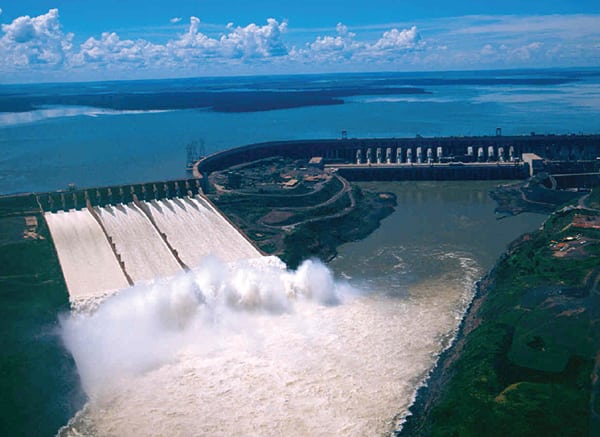Brazil Greenlights 11-GW Belo Monte Project
Brazil’s environment agency, IBAMA, in January issued a partial installation license that allows for construction of the controversial Belo Monte dam complex, an 11,233-MW project estimated to cost some 19.6 billion reals (US$11.7 billion), to begin on the margins of the Amazon’s Xingu River. Saying the project is needed to meet soaring electricity demand when completed, as planned in 2015, the government gave license to dam-building consortium Norte Energia to begin clearing 238.1 hectares (588 acres) of forestland.
The massive hydro project is expected to be the world’s third largest in installed capacity when completed, putting it behind China’s Three Gorges Dam (22,500 MW) and the Itaipú Dam (14,000 MW) on the border of Brazil and Paraguay. Featuring 14 611-MW Francis turbine generator sets and six smaller Bulb units—supplied under a $682 million February contract to a consortium that includes Alstom, Voith, and Andritz—it will supply 4,571 MW of “assured power,” fueling the Pará region, which is famed for its extraction and refinery industries and large deposits of bauxite and aluminum. Belo Monte will also be “fundamental” in keeping the fast-paced Brazilian economy on track. Projections from the government’s research arm, EPE (Empresa de Pesquisa Energética), suggest a 107% increase in demand for power in the country by 2017, a majority of which will be met by hydropower projects.
Belo Monte, which was conceived 35 years ago, during Brazil’s military dictatorship, had received a preliminary license in February last year and was subject to conditions covering a number of social and environmental issues. But the latest “partial installation” license from IBAMA comes amid heated opposition to the project on the grounds that it disregards human rights and environmental legislation. Nonprofit group International Rivers claims that the dam complex, which will divert nearly the entire flow of the Xingu River along a 62-mile stretch, will displace 100,000 acres of rainforest and force 40,000 people to move. The group also says that Brazil’s reliance on hydropower isn’t as green as it contends, because massive dams like Belo Monte generate vast quantities of methane, a greenhouse gas 25 times more potent than carbon dioxide.
Opponents also argue that the project’s construction could prove futile, even dangerous, because Brazil is basing its energy future on massive hydropower dams in a region where water may be increasingly scarce. Scientists say that the Amazon region has seen records for both rains and droughts over the past five years.
The government refutes this by alleging that hydropower in the country has prospered. State-owned energy company Eletrobrás (a key stakeholder in the Belo Monte project) said in a statement that the massive Itaipú Dam (Figure 3), for example, generated 85.97 million MWh in 2010—enough to supply all the demand of Paraná State for three years and seven months. (Itaipú was designed to generate up to 75 million MWh.) By comparison, it cited the Three Gorges plant’s numbers: The Chinese plant reportedly ended 2009 having generated 79.5 million MWh. The third-largest hydropower producer in the world was the Guri complex in Venezuela, at 53.4 million MWh.
 |
| 3. Muddied waters. Brazil’s environment agency, IBAMA, in January gave a consortium comprising state-owned Eletrobrás and construction firms the green light to begin clearing land around the Xingu River in the Amazon in preparation for construction of the massive 11.2-GW Belo Monte dam complex. The project is highly controversial. Hydropower is especially beneficial to Brazil, says Eletrobrás, which claims that the 14-GW Itaipú dam (shown here) straddling the border between Paraguay and Brazil generated 86 million MWh last year—more than the Three Gorges dam in China. Courtesy: Itaipu Binacional |
The dam’s most recent approval also is tinged with political friction. IBAMA was reportedly pressured to grant the license by former Minister of Mines and Energy and current President Dilma Rousseff, and this was allegedly a factor in the recent resignation of IBAMA’s president, Abelardo Bayma. Political pressures are also reportedly spilling over, potentially affecting the project’s finances: In early February, a major project backer, the Brazilian National Development Bank, said it would not grant a US$640 million loan for the dam until 40 social and environmental conditions had been met. Norte Energia, the consortium contracted to build the dam, has said that it may drop the bank’s loan altogether and seek private funding instead.
–Sonal Patel is POWER’s senior writer.